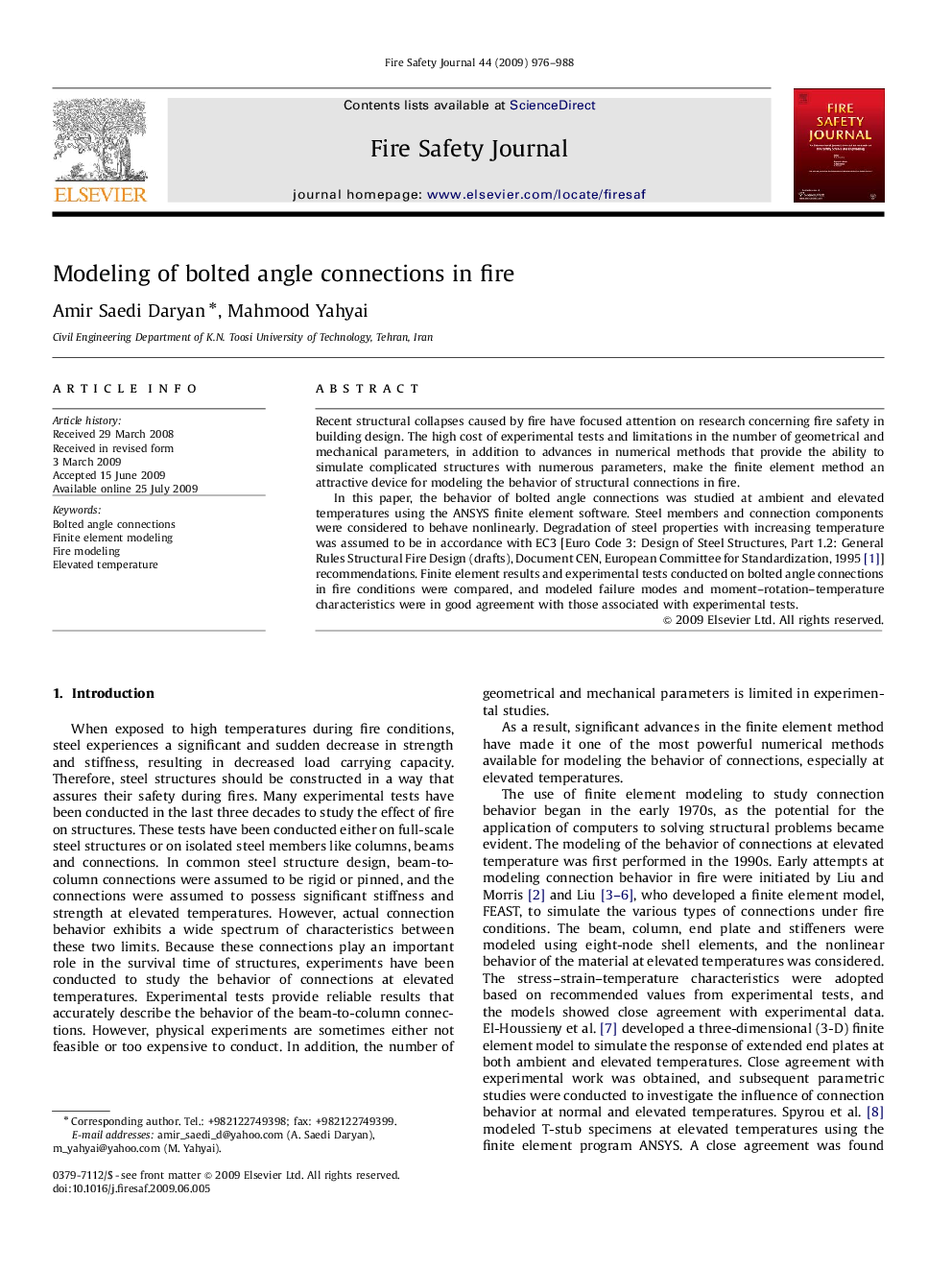| Article ID | Journal | Published Year | Pages | File Type |
|---|---|---|---|---|
| 270288 | Fire Safety Journal | 2009 | 13 Pages |
Recent structural collapses caused by fire have focused attention on research concerning fire safety in building design. The high cost of experimental tests and limitations in the number of geometrical and mechanical parameters, in addition to advances in numerical methods that provide the ability to simulate complicated structures with numerous parameters, make the finite element method an attractive device for modeling the behavior of structural connections in fire.In this paper, the behavior of bolted angle connections was studied at ambient and elevated temperatures using the ANSYS finite element software. Steel members and connection components were considered to behave nonlinearly. Degradation of steel properties with increasing temperature was assumed to be in accordance with EC3 [Euro Code 3: Design of Steel Structures, Part 1.2: General Rules Structural Fire Design (drafts), Document CEN, European Committee for Standardization, 1995 [1]] recommendations. Finite element results and experimental tests conducted on bolted angle connections in fire conditions were compared, and modeled failure modes and moment–rotation–temperature characteristics were in good agreement with those associated with experimental tests.
